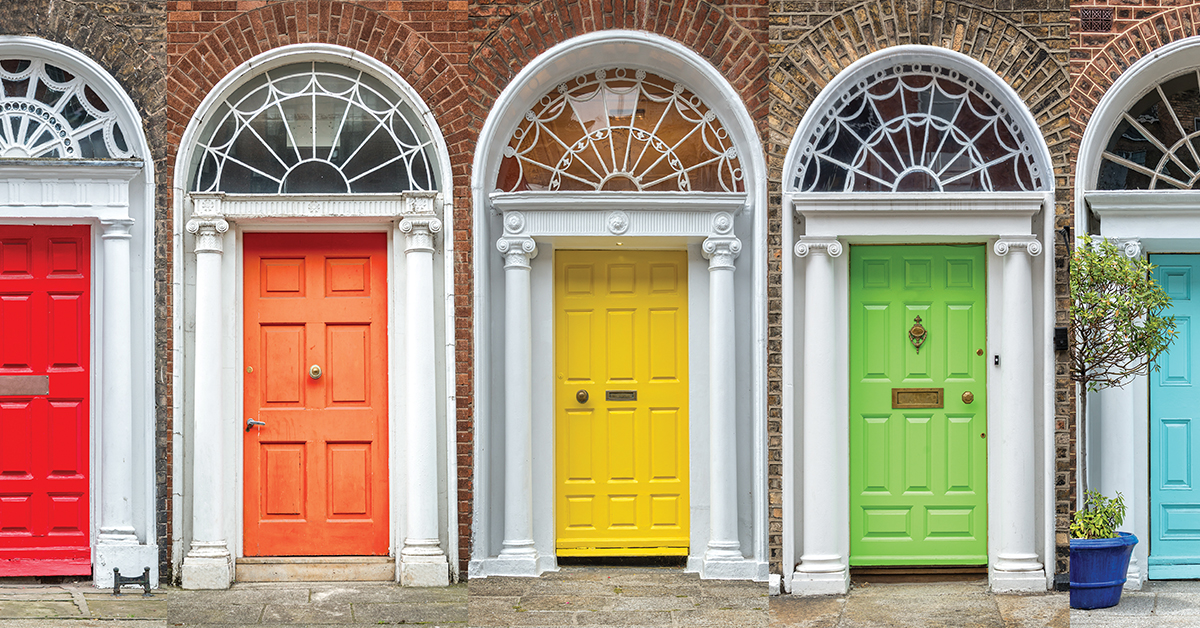It is widely believed that in the next couple of decades, homebuyers — especially those entering the market for the first time — will be the most diverse in the history of this country. And it won’t just be the growing number of people of color but also those in the LGBTQ community. Consider that more than half of millennials, who currently make up the largest share of homebuyers, view themselves as members of some type of racial, cultural or ethnic minority.
The fact is, LGBTQ, Black and other minority communities are often on the receiving end of discriminatory practices that are subtle but highly effective.
To survive the next few decades, every sector of the housing industry, from real estate agents to mortgage originators, lenders and servicers, will need to learn how to better serve these communities — and learn it fast. According to an Urban Institute report, between 2020 and 2040,
the number of Hispanic homeowners will grow by 4.8 million. Black homeowners will grow by 1.2 million and homeowners of other races (mainly Asian Americans) will grow by 2.7 million. Meanwhile, the number of white homeowners will decline by 1.8 million.
Although these projections represent real opportunity for mortgage professionals, the industry also must acknowledge the fact that for the past 50 years, the business has failed to offer substantive assistance to minorities pursuing the American dream of homeownership. This holds true for the LGBTQ community as well.
Continued adversity
To be sure, some strides have been made. But there is no denying that two groups — LGBTQ and Black communities — are facing challenges that are not always shared by other minorities when it comes to purchasing a home. LGBTQ is sometimes expanded to LGBTQIA+ to include people of all sexual orientations.
A 2020 study from the Williams Institute at the UCLA School of Law found that while 70.1% of non-LGBTQ adults own their homes,
only 49.8% of LGBTQ adults do. In fact, the study found that homeownership rates are even lower among LGBTQ racial minorities and transgender people.
Every sector of the housing industry, from real estate agents to mortgage originators, lenders and servicers, will need to learn how to better serve these communities — and learn it fast.
Same-sex couples are less likely to own their homes than opposite-sex couples (63.8% and 75.1%, respectively). Married same-sex couples are less likely to own their homes than married different-sex couples (72% and 79.4%, respectively).
White Americans (72.1%), Asian Americans (61.7%) and Hispanic Americans (51.1%) each achieved 10-year high points in homeownership in 2020, with the rate for Hispanic Americans setting an all-time record by exceeding 50% for the first time. Conversely, the homeownership rate for Black Americans — 43.4% — was less than it was a decade earlier (44.2% in 2010).
Legislative legacy
President Lyndon B. Johnson signed the Civil Rights Act in 1964. Title VIII of the act, also known as the Fair Housing Act, prohibited discrimination concerning the sale, rental and financing of housing based on race, religion, national origin, sex, and (as amended) disabled and family status.
While its passage was hailed as a significant achievement, in reality, it didn’t move the needle much for the LGBTQ and Black communities. Neither did the Community Reinvestment Act, which was passed in 1977. It was intended to encourage depository institutions to help meet the credit needs of the communities in which they operate.
As recently as 2021, the U.S. Department of Housing and Urban Development announced that LGBTQ Americans are protected under the Fair Housing Act. It advised that the act’s prohibition of discrimination based on sex includes sexual orientation and gender identity. Clearly, it’s too soon to feel the impact of this policy decision.
These federal legislative actions have basically looked good on paper but have not been put into successful practice on a widespread basis. This begs the question: If it had not been for these legislative acts, where would the country be today based solely on the self-action of the mortgage industry?
Discriminatory practices
Discrimination still plays a significant role in the homeownership gap for underserved communities. It has a long history and there’s a real fear it will continue. For queer people specifically, the discrimination they encounter is based on sexual orientation or gender identity and occurs when there is a situation that doesn’t appear to fit heteronormative societal expectations.
Another challenge is the lack of LGBTQ representation within the mortgage industry itself. Without more equitable representation, the homeownership aspirations of this minority group will remain suppressed.
Fear of acceptance is an obstacle as well. When you’re shopping for a home, you’re looking to become part of a community. Queer people are often afraid they won’t be welcome. It’s the same fear they experience when they come out to their families — that their parents won’t accept them and they’ll be disowned. The unfortunate reality is that laws cannot prevent this type of discrimination — ostracization — from happening within neighborhoods.
All of this is further aggravated by the fact that 50% of LGBTQ people live in states that do not prevent housing discrimination based on sexual orientation or gender identity. In fact,
only 23 states have laws that specifically protect queer communities from either of these biases. So, if they do experience discrimination in these states, they can report it, but there’s not much they can do beyond that.
The fact is, LGBTQ, Black and other minority communities are often on the receiving end of discriminatory practices that are subtle but highly effective in terms of producing the desired result — controlling or limiting opportunities available to them. They often involve a conscious or unconscious bias manifesting through small actions such as an unreturned phone call, or real estate professionals or property managers withholding information on potential homes.
Path forward
The mortgage industry is working on ways to help the underserved, especially when it’s comfortable and convenient. One effort is homebuyer education. Today’s educational programs are largely geared toward credit knowledge and the budgeting process, both of which are tremendously important.
There also are specialized loan programs that help low- to moderate-income and minority homebuyers purchase homes in established income-restricted and predominantly minority areas. These loan programs, however, have ended up creating housing silos that are segregated by income and racial/ethnic divides. In a sense, it’s redlining in reverse.
There is little historical data to suggest these loan programs have helped low- and moderate-income borrowers get into higher-income areas. In fact, these concepts appear to only help low-income people buy in low-income areas, thus keeping the neighborhood segregated and inhabited only by those with limited economic resources.
The same thing is happening in racial communities. Specialty mortgage programs with favorable terms promote home purchases by minorities to stay within minority communities instead of more diverse neighborhoods. So, while the mortgage industry may have grown homeownership opportunities overall, the business has not done it in a particularly equitable or healthy way. As an industry, the goal must be to work to promote mixed-income and mixed-race communities in order to successfully bridge the homeownership gap for the long term.
Concrete steps
There are things that can be done to meet LGBTQ, racial and ethnic minorities where they are on their journey to homeownership. First, the mortgage industry must create educational programs and lending alternatives that promote the integration of minority communities into the mainstream housing market. The industry also needs viable options that allow real estate professionals to help low- and moderate-income and minority home shoppers find homes in higher-income areas, or help families of color gain access to predominately white neighborhoods.
As noted earlier, the mortgage business also must take concrete steps to start looking like the minority communities that it is attempting to serve. When LGBTQ individuals and people of color become part of every sector of the industry, they will be in a better position to address this opportunity because representation is present at the table with industry decisionmakers.
Additionally, the goal must be to work harder to achieve residential integration. One path to do that is to encourage policymakers to pass laws and tax structures that help these communities gain access to healthier, more diverse, long-term avenues for housing.
And lastly, mortgage professionals must pursue greater community engagement. By getting involved at the grassroots level, those in the business can learn firsthand about the concerns and misconceptions that are quite common in ethnic, racial and cultural minority communities, then address them.
● ● ●
Unfortunately, the American dream has been much more of a dream than an achievable goal for many in the LGBTQ and racial/ethnic communities. It’s possible that the need has now become so crucial for an industry that is struggling with the nation’s housing crisis that mortgage professionals will implement alternative programs to help minority communities achieve equal footing when it comes to buying homes and building wealth. ●
-
Jeremy Davis is CEO at InQlusion Mortgage Capital, a Panorama Mortgage Group (PMG) company. For nearly 20 years, Davis has advocated for underserved communities. Before joining PMG, he served as director of mortgage for FirstBank, where he led the FirstBank Forward division, an initiative with a specific mission of bridging the homeownership gap that minorities face. Prior to that, Davis led similar successful expansions into new market territories for Synovus, Fifth Third Bank and JPMorgan Chase.
View all posts






